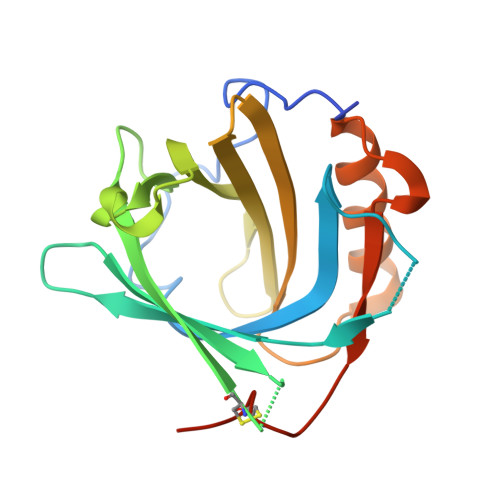Daedalus: a robust, turnkey platform for rapid production of decigram quantities of active recombinant proteins in human cell lines using novel lentiviral vectors.
Bandaranayake, A.D., Correnti, C., Ryu, B.Y., Brault, M., Strong, R.K., Rawlings, D.J.(2011) Nucleic Acids Res 39: e143-e143
- PubMed: 21911364
- DOI: https://doi.org/10.1093/nar/gkr706
- Primary Citation of Related Structures:
3S26 - PubMed Abstract:
A key challenge for the academic and biopharmaceutical communities is the rapid and scalable production of recombinant proteins for supporting downstream applications ranging from therapeutic trials to structural genomics efforts. Here, we describe a novel system for the production of recombinant mammalian proteins, including immune receptors, cytokines and antibodies, in a human cell line culture system, often requiring <3 weeks to achieve stable, high-level expression: Daedalus. The inclusion of minimized ubiquitous chromatin opening elements in the transduction vectors is key for preventing genomic silencing and maintaining the stability of decigram levels of expression. This system can bypass the tedious and time-consuming steps of conventional protein production methods by employing the secretion pathway of serum-free adapted human suspension cell lines, such as 293 Freestyle. Using optimized lentiviral vectors, yields of 20-100 mg/l of correctly folded and post-translationally modified, endotoxin-free protein of up to ~70 kDa in size, can be achieved in conventional, small-scale (100 ml) culture. At these yields, most proteins can be purified using a single size-exclusion chromatography step, immediately appropriate for use in structural, biophysical or therapeutic applications.
- Department of Immunology, University of Washington, Seattle, WA 98195, USA.
Organizational Affiliation:

















